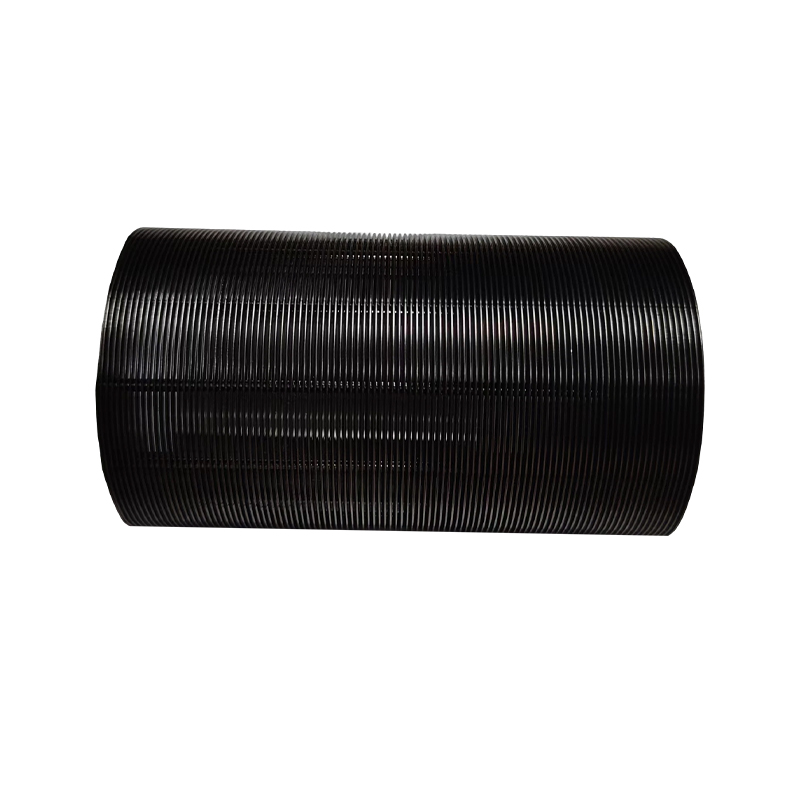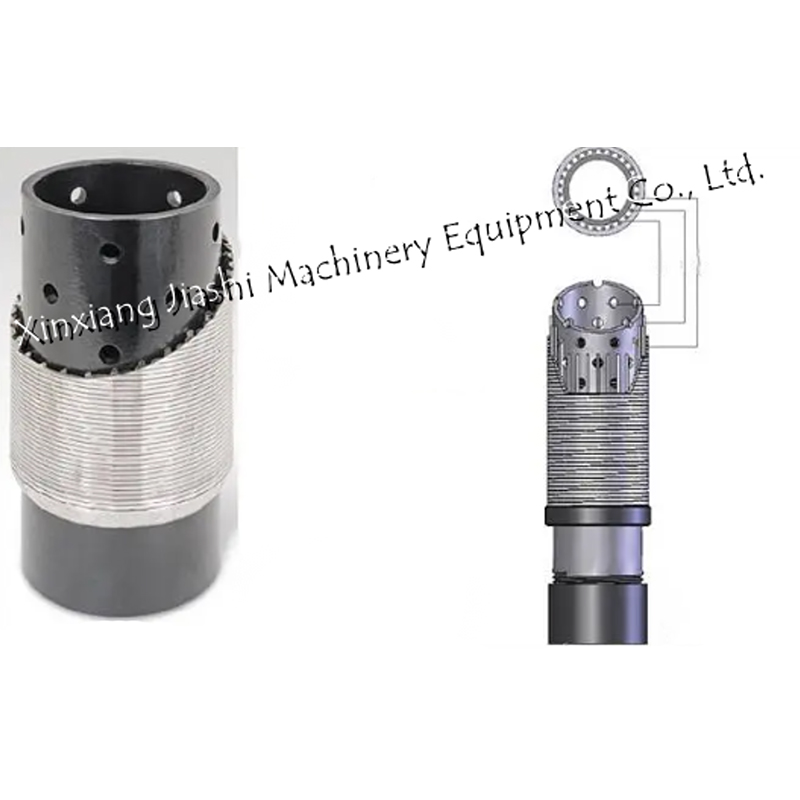How does the positive winding screen improve filtration stability by reducing water flow velocity?
Release Time : 2025-07-09
In industrial filtration systems, the performance of the screen directly affects the stability and efficiency of the entire process. The positive winding screen has been widely used in many industries due to its unique structural design and good fluid control ability.
1. Larger opening area for smoother water flow transition
Compared with traditional circular hole screens, the positive winding screen adopts a continuous gap design, which makes the effective opening area per unit area larger. This structure not only improves the flow capacity, but also significantly reduces the speed of water entering the screen. The reduction in water flow velocity means that the impact force of the fluid on the screen surface is reduced, thereby reducing the local pressure fluctuations and turbulence caused by high-speed flow. This not only helps to maintain the stability of the flow state during the filtration process, but also reduces the accumulation of particles inside the screen, avoids premature clogging, and improves the reliability of the overall operation.
2. V-shaped cross-section design to enhance pressure resistance and anti-blocking capabilities
The cross-section of the positive winding screen is V-shaped, consisting of a shape contour line and a longitudinal support rod. This structure optimizes the design of the water flow channel while ensuring strength. Each intersection is precisely calculated to ensure that no dead angle or dead zone is formed, which fundamentally avoids the problem of impurities such as sand and gravel being retained and blocked inside the screen. More importantly, the V-shaped structure can withstand greater external pressure without deformation, and can maintain a stable filtering state even in high-pressure and high-flow environments. In addition, this design also has good shrinkage, and can automatically adapt to temperature changes or pressure fluctuations, reducing structural fatigue caused by thermal expansion and contraction, and further extending the service life.
3. Low-speed water flow environment, improves filtration accuracy and efficiency
In many industrial applications, the filtration effect depends not only on the aperture size of the screen, but also on the movement state of the water flow. When the water flows through the screen at a lower speed, the impurity particles have more time to contact the screen and are effectively intercepted. This low-speed and uniform flow mode makes the positive winding screen perform well when dealing with media with high sand content. For example, in groundwater extraction and oilfield reinjection water treatment, the water flow often carries a large number of fine particles. If the flow rate is too high, these particles can easily penetrate the screen or embed into the gap to cause blockage. The positive winding screen, with its natural deceleration characteristics, can complete the filtration process more gently, thereby improving the filtration accuracy and extending the cleaning cycle.
4. Avoid high-pressure entry of sand and gravel to protect the safe operation of the system
In some special application scenarios, such as deep well pump filter pipes, geothermal recharge wells, etc., the water flow will carry a large amount of sand and gravel and impact the screen at a high pressure. If the screen structure is not strong enough or the flow rate is improperly controlled, it is very easy to cause sand and gravel to embed into the gap, which will cause serious blockage or even equipment damage. The "narrow outside and wide inside" structural characteristics of the positive winding screen enable it to effectively block large particles from entering the screen without affecting the overall flow capacity. This design not only prevents the jamming problem caused by the forced entry of sand and gravel under high pressure, but also provides convenient conditions for subsequent sand discharge and maintenance. In addition, since the screen itself has strong mechanical properties, it is not easy to wear or break even under long-term particle scouring, ensuring the continuous and stable operation of the entire system.
In summary, the positive winding screen achieves a smoother fluid transition, stronger anti-blocking ability and higher filtration stability by reducing the water flow rate. Its unique V-shaped structure, continuous gap design and excellent mechanical properties enable it to maintain efficient and reliable operation even in the face of complex water quality and harsh working conditions.
1. Larger opening area for smoother water flow transition
Compared with traditional circular hole screens, the positive winding screen adopts a continuous gap design, which makes the effective opening area per unit area larger. This structure not only improves the flow capacity, but also significantly reduces the speed of water entering the screen. The reduction in water flow velocity means that the impact force of the fluid on the screen surface is reduced, thereby reducing the local pressure fluctuations and turbulence caused by high-speed flow. This not only helps to maintain the stability of the flow state during the filtration process, but also reduces the accumulation of particles inside the screen, avoids premature clogging, and improves the reliability of the overall operation.
2. V-shaped cross-section design to enhance pressure resistance and anti-blocking capabilities
The cross-section of the positive winding screen is V-shaped, consisting of a shape contour line and a longitudinal support rod. This structure optimizes the design of the water flow channel while ensuring strength. Each intersection is precisely calculated to ensure that no dead angle or dead zone is formed, which fundamentally avoids the problem of impurities such as sand and gravel being retained and blocked inside the screen. More importantly, the V-shaped structure can withstand greater external pressure without deformation, and can maintain a stable filtering state even in high-pressure and high-flow environments. In addition, this design also has good shrinkage, and can automatically adapt to temperature changes or pressure fluctuations, reducing structural fatigue caused by thermal expansion and contraction, and further extending the service life.
3. Low-speed water flow environment, improves filtration accuracy and efficiency
In many industrial applications, the filtration effect depends not only on the aperture size of the screen, but also on the movement state of the water flow. When the water flows through the screen at a lower speed, the impurity particles have more time to contact the screen and are effectively intercepted. This low-speed and uniform flow mode makes the positive winding screen perform well when dealing with media with high sand content. For example, in groundwater extraction and oilfield reinjection water treatment, the water flow often carries a large number of fine particles. If the flow rate is too high, these particles can easily penetrate the screen or embed into the gap to cause blockage. The positive winding screen, with its natural deceleration characteristics, can complete the filtration process more gently, thereby improving the filtration accuracy and extending the cleaning cycle.
4. Avoid high-pressure entry of sand and gravel to protect the safe operation of the system
In some special application scenarios, such as deep well pump filter pipes, geothermal recharge wells, etc., the water flow will carry a large amount of sand and gravel and impact the screen at a high pressure. If the screen structure is not strong enough or the flow rate is improperly controlled, it is very easy to cause sand and gravel to embed into the gap, which will cause serious blockage or even equipment damage. The "narrow outside and wide inside" structural characteristics of the positive winding screen enable it to effectively block large particles from entering the screen without affecting the overall flow capacity. This design not only prevents the jamming problem caused by the forced entry of sand and gravel under high pressure, but also provides convenient conditions for subsequent sand discharge and maintenance. In addition, since the screen itself has strong mechanical properties, it is not easy to wear or break even under long-term particle scouring, ensuring the continuous and stable operation of the entire system.
In summary, the positive winding screen achieves a smoother fluid transition, stronger anti-blocking ability and higher filtration stability by reducing the water flow rate. Its unique V-shaped structure, continuous gap design and excellent mechanical properties enable it to maintain efficient and reliable operation even in the face of complex water quality and harsh working conditions.







